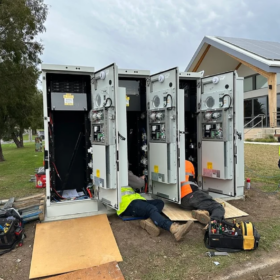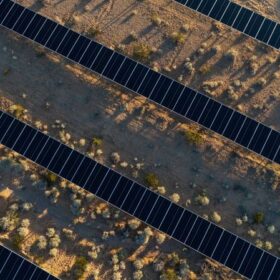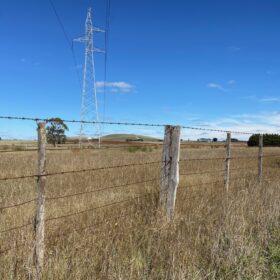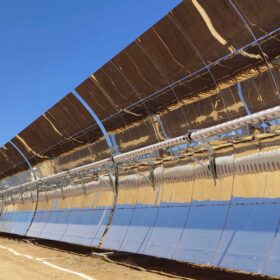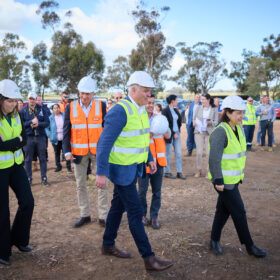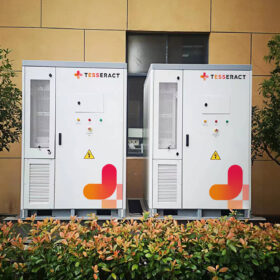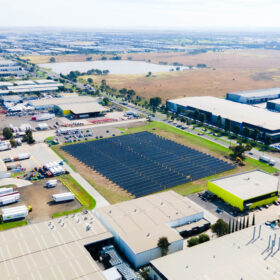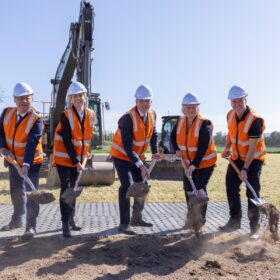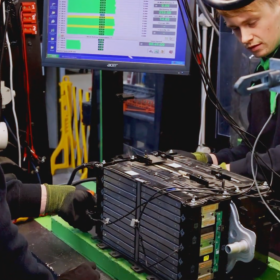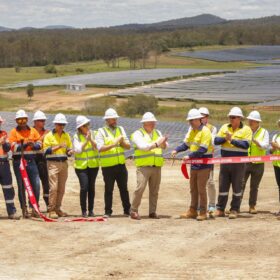Latest community battery installs deliver combined 1.1 MWh capacity
The newest community battery energy projects rolled out under the Australian government’s Community Batteries for Household Solar program deliver a combined 1,170 kWh of energy storage capacity.
Quinbrook announces sale of Energy Locals retail platform
Renewable energy focused investment manager Quinbrook Infrastructure Partners has offloaded electricity retailer Energy Locals to a consortium led by Australian fund manager Palisade Impact.
TCV reveals preferred easement for Victoria to NSW interconnector project
The preferred easement for the 240-kilometre Victorian section of the Victoria to New South Wales Interconnector West transmission line project has been released by Transmission Company Victoria.
Flexible printed solar film research tacks closer to commercial viability
Researchers at the CSIRO have taken their pilot-scale prodcution of flexible printed solar film to a new level, following the official launch of its Printed Photovoltaic Facility in southwest Melbourne, Victoria.
Mars plans concentrated solar thermal tech for Victorian plant
The federal government will tip more than $17 million into what it said will be Australia’s first commercial concentrated solar thermal heat plant, expanding the application of solar power beyond electricity to heat generation.
Largest solar farm in Victoria begins construction
Engie has broken ground on its 250 MW Goorambat East solar farm, with Victorian minister for climate action, energy and resources, Lily D’Ambrosio, attending the event. The solar farm, Victoria’s largest under construction, is expected to be operational by 2026.
Storage and solar ‘as-a-service’ venture hits Australia’s C&I segment
Founder and former CEO of SwitchDin Dr Andrew Mears is launching his new venture, Tesseract ESS, at Melbourne’s All Energy today. The proposition expands on his previous technologies to deliver a ‘storage-as-a-service’ model focused on Australia’s C&I segment, providing battery and solar systems at $0 CAPEX to Australian farmers, manufacturers and other businesses. Pv magazine Australia spoke to Mears ahead of the launch.
Victorian efficiency certificate returns boost commercial solar investment
Victorian commercial solar system installations greater than 100 kW can access a decade’s worth of energy efficiency certificates up front after the first year, based on greenhouse gas emissions reductions rather than power generated.
AGIG project provides boost for green hydrogen ambitions
Australia’s renewable hydrogen ambitions have received a boost with construction officially starting on a 10 MW green hydrogen project being developed on the border between New South Wales and Victoria.
New recycling deal revs up electric vehicle battery circular economy
Australian battery recycling company Envirostream, a subsidiary of Perth-headquartered advanced raw materials company Lithium Australia, has signed an exclusive recycling agreement with repurposed electric vehicle battery manufacturer Infinitev.
